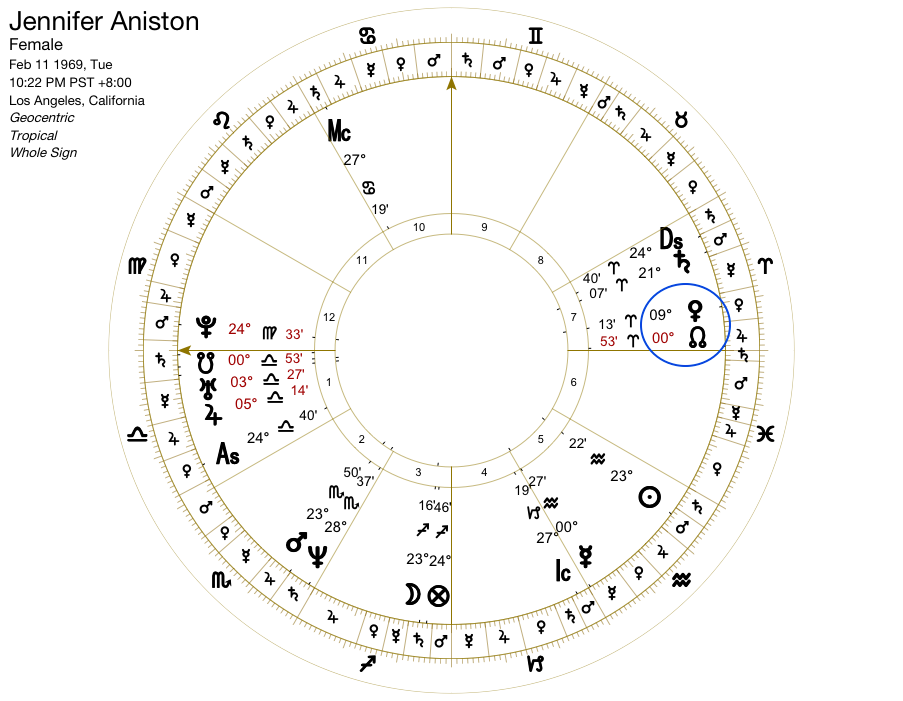Places of Increase and Decrease: Uncovering the Meaning of the Nodes in the Birth Chart
Those funny looking horseshoe symbols in the birth chart — the North and South Nodes — can be a source of confusion for people new to astrology. Unlike most other points in the birth chart, say Saturn or Venus, the nodes aren’t actual physical bodies. They don’t emit light, they don’t make aspects, and you can’t get a picture of them from a telescope. So what the heck are they?
Ancient astrologers referred to the nodes as the places where eclipses occurred. They’re points in space — axis points — where the Moon occasionally changes from north to south latitude. When a New Moon, such as the one we just had on Oct. 25, occurs at one of the Nodes, we’ll have an eclipse. Eclipses usually occur in successions of two — or even three. These are called eclipse seasons. The eclipse season begins when the Sun is within 18º of the North or South Node and it ends when the Sun clears 18º on the other side of the Nodes.
You’ll sometimes hear astrologers speak about the Nodes in relation to past lives, reincarnation and life lessons. These are all wonderfully valid ways of viewing the Nodes, but it’s also a recent invention. Much of the modern notion of Nodes were imported into astrology via the New Age movement in the past century. You won’t find evidence of ancient astrologers in the Western tradition (or even in Vedic astrology) assigning such meanings to the Nodes.
If they aren’t about past lives and your karma, what are they about?
The ancient astrologers in the Hellenistic tradition saw the nodes as the head and the heart of the dragon. The North Node symbolized the head of the dragon, and was related to the intellect and notions of expansion and increase. The South Node symbolized the heart of the dragon, and was related to emotions, spirituality and notions of draining and decrease.
When a planet is conjunct (close to) the North Node, the ancients believed that the qualities and significations of that planet were amplified. Say Jupiter is conjunct the North Node. The native might experience an expansion of Jupiter’s blessings and benefits. But, if the North Node were close to a classically malefic planet like Saturn or Mars, you would get a heightened experience of those planets challenging qualities.
Take, for instance, the Friends actress Jennifer Aniston. Her Venus is pretty close to the North Node in her Seventh House. Venus rules her First House of the self, which can relate to the way people view you, your health and vitality, your physical appearance and your overall pleasantness (or lack thereof). With her Venus amplified by the North Node, you’re going to get someone with stunning good looks who is pleasant to be around and well-liked by many.
On the flip side, the South Node is like a roof in desperate need of repair. When a planet is conjunct the South Node, you may see a draining quality surrounding that planet’s significations. Let’s say Jupiter is the ruler of the Fourth House of family and he’s conjunct the South Node. It’s likely that the native will report a difficult upbringing, instability around home and living situation, and other challenges in this area of life. When a classically benefic planet like Venus or Jupiter is on top of the South Node, expect that their goodness is diminished. But if a malefic like Mars or Saturn is on the South Node, you’ll likely see these planets behaving less badly.
Take, for instance, Britney Spears whose Venus is conjunct the South Node. Some of Venus’ goodness is going to be drained by this interchange. Venus, for Britney, represents the self along with Eighth House topics like taxes, debt, and finances related to partners or held by others. We know that Britney had a long-standing conservatorship of her finances held by her father. Every possible financial decision in her life was being made by someone else. Her father had even committed her to a psychiatric facility in 2019 (allegedly under false pretenses), setting off protests by fans. The psyche is a common Eighth House signification.
Here are a few tips for working with the Nodes in your own chart:
Look at conjunctions only. The Nodes don’t make aspects — they aren’t physical things. While some astrologers will look at squares or other aspects to the Nodes, you’ll get your richest information for planets that are on top of one of them.
Consider the house where the Nodes reside. Where the North Node is placed, this is likely where you’re most practical and logical. Where the South Node is placed, this is where emotion and spirituality take primacy.
Think in relation to increase and decrease. The North Node increases the good of benefic planets and the challenges of malefic planets, while the South Node decreases the good of benefic planets and the challenges of malefic ones.
Look for the Moon. If the Moon is conjunct a Node, she’s making a change in latitude. Wherever this is occurring in the chart is likely to be an area of life where things can feel a bit unsteady and transitory.
If you’re interested in diving deeper into the meaning of the Nodes in your chart, hop on over to the Book A Consultation page and schedule a time with me. Together we can uncover the places of decrease and increase in your life, and help you time your decisions with astrology.



